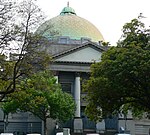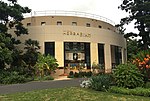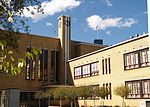Melbourne Grammar School

Melbourne Grammar School is an Australian independent Anglican day and boarding school. It comprises a co-educational preparatory school from Prep to Year 6 and a middle school and senior school for boys from Years 7 to 12. The three campuses are Grimwade House (Prep to Year 6) in Caulfield, Wadhurst (Years 7 and 8) and Senior School (Years 9 to 12), both in the suburb of South Yarra. Founded on 7 April 1858 as the Melbourne Church of England Grammar School, the school currently caters for approximately 1,800 students from Prep to Year 12, including 120 boarders from Years 7 to 12.Melbourne Grammar is affiliated with the Headmasters' and Headmistresses' Conference, the Association of Heads of Independent Schools of Australia (AHISA), the Independent Primary School Heads of Australia (IPSHA), the Australian Boarding Schools' Association (ABSA), the Association of Independent Schools of Victoria (AISV), and is a founding member of the historic Associated Public Schools of Victoria (APS). The School is also a member of the G20 Schools Group, and officially a partner school with Waseda University and its affiliates in Japan. Three of Australia's former prime ministers were educated at Melbourne Grammar School.
Excerpt from the Wikipedia article Melbourne Grammar School (License: CC BY-SA 3.0, Authors, Images).Melbourne Grammar School
St Kilda Road, Melbourne Melbourne
Geographical coordinates (GPS) Address External links Nearby Places Show on map
Geographical coordinates (GPS)
| Latitude | Longitude |
|---|---|
| N -37.833888888889 ° | E 144.97611111111 ° |
Address
Melbourne Grammar School
St Kilda Road
3004 Melbourne, Melbourne
Victoria, Australia
Open on Google Maps











